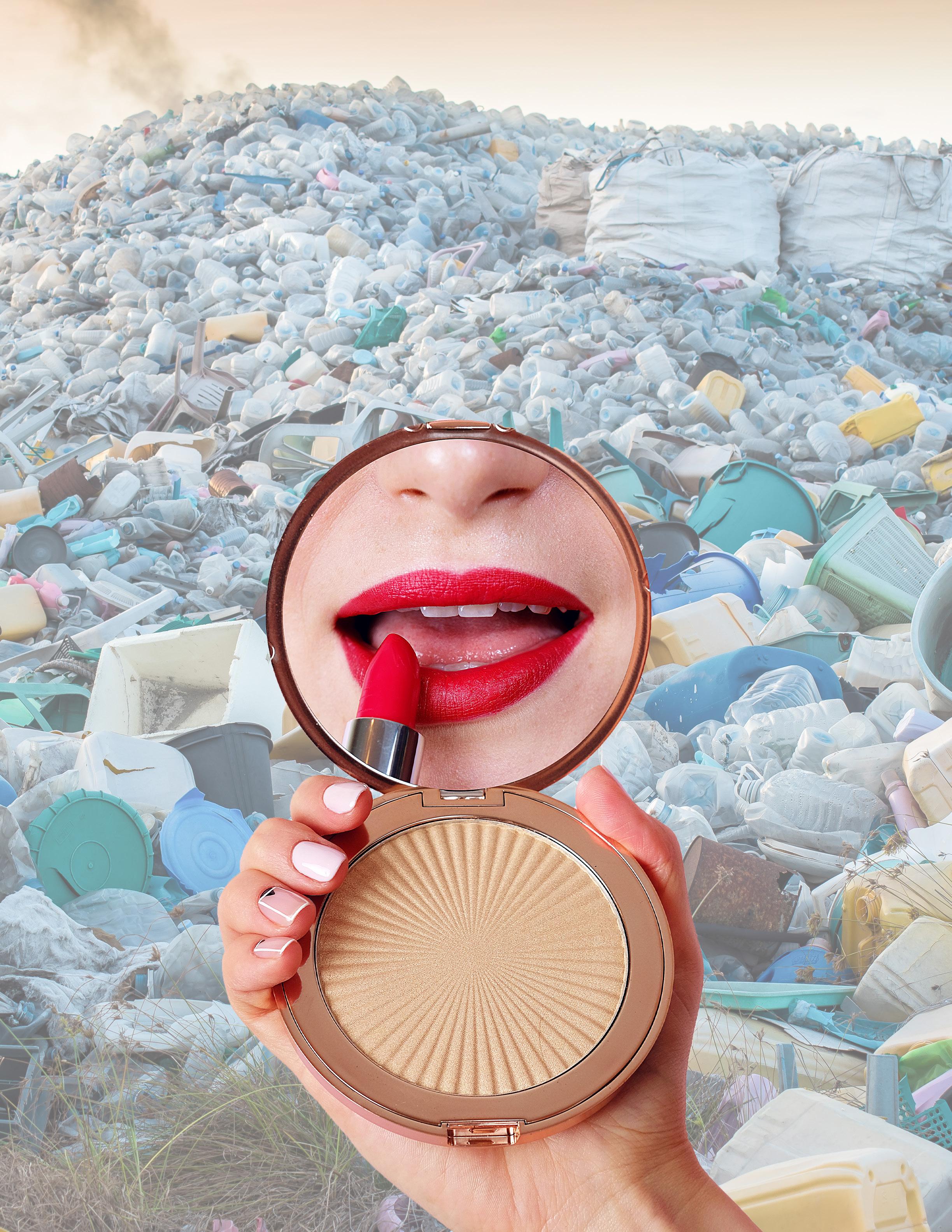
3 minute read
Skin Deep
“Fast beauty” p oses very real threats to our environment
by Rebecca riggio
As beauty lovers, we can’t help but think there are never too many nude lipsticks, too many eyeshadow palettes, or too many steps in our skincare routines. But this overconsumption is something that we may have to change, despite the heartbreak.
As veterans of the fast-fashion era, this shouldn’t come as a shock. Stores like H&M and Forever 21 have been thriving since the early 2000s because of their affordable, in-and-out pieces, and the effects on both factory workers and the environment are well documented. Beauty and personal care products are also offered by a multitude of retailers, making it simple to purchase a lip balm while checking out at CVS, or spend $50 on a new foundation at Sephora or Ulta. The availability of beauty products—and the palpable excitement surrounding them— might make it hard to realize why we need to take a step back.
According to the International Union for the Conservation of Nature, eight million tons of plastic enter our oceans each year. At our current rate, we will soon have more plastic in our oceans than actual fish. Our coral reefs are dying as they become tangled in plastic. Tiny particles of plastic enter our food, our drinking water, and even the air, to the point that we consume a full credit card-sized amount of plastic every week, according to a report in USA Today.
Yet we still watch as influencers blithely unravel layers of plastic wrap in their latest unboxing hauls. YouTube and social media specifically have fueled over-consumption within the beauty community over the last decade. The world of beauty gurus and influencers has changed the buying habits of a generation of teens. When a product is trending on social media, it is only a matter of time before that product is sold out. Nobody needed it, especially not in our drinking water, but everybody seemed to want it.
Regardless of how you dispose of your finished or unfinished beauty products, their toxins and plastics end up doing real damage to our communities, waters, rainforests, wildlife, and more. According to Botanical Trader, cosmetic product packaging takes hundreds of years to break down in landfills, leaking toxins into soil and waterways. The chemicals in the products can be destructive to wildlife; small pieces of plastic routinely kill turtles and other marine animals by blocking their digestive tracts.
We might love to see what surfaces in a $1,000 Sephora beauty haul or find out our favorite makeup artists’ products of the month. At some point, this just becomes willful ignorance. But of course, the responsibility does not fall solely on the consumer. The beauty industry produces 120 billion units of packaging every year. As consumers, we can use both our wallets and voices to promote change. But the real change is up to the large corporations.
This isn’t to say that all beauty practices are unethical. L’Oreal, the world’s largest beauty company, is actually recognized as one of the largest corporations to emphasize social responsibility and push for change. By 2025, The L’Oreal Group will have packaging that is one hundred percent reusable, recyclable, or compostable. The company, which is home to many of the world’s most successful beauty brands, has pledged to be entirely sustainable by the year 2030, an ambitious goal.
These changes are not always easy to make, but it is important to reflect on how the industry we are so passionate about affects our planet. I myself have drawers upon drawers overflowing with so much makeup that I don’t think I will ever run out as it is. Now seems like the time to stay informed on the companies you purchase from, make an effort to find recyclable packaging, and think before you buy another dewy foundation. We must find a way to show our planet the same amount of love we show our faces.









